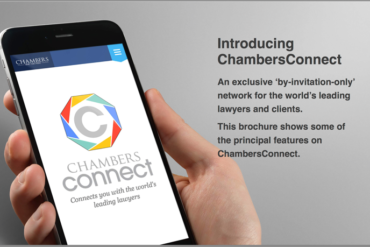If you’re a lawyer or legal professional active on social media, I’d love to hear about your strategy for engagement.
From what I’ve seen, lawyers in mid-sized firms, smaller markets, or large regional firms stand to gain a great deal by building a stronger presence on the social web. Social media can quickly expand your circle of influence and open new markets for your services.
But as the social web evolves, lawyer participation often feels scattered and inconsistent. Like any form of marketing, success rarely happens by accident—it requires clear objectives, defined strategies, and measurable goals.
Over the years, I’ve gathered insights on what works and what doesn’t. I’ve distilled that experience into the simple outline below and am sharing it here so readers can add their perspectives. What have I missed? What would you include?
Strategic Planning for the Social Web
The social media networking strategy has three primary categories: Design, Develop and Assess and one ancillary category: Innovate. Your online plan works best if you can align the key objectives of your current off-line marketing or business development activities with your key objectives for your online activity. Be specific, but keep in mind that nothing is necessarily exclusive and that the best plan may be pretty inclusive, and of course, flexible.
Design
- Who –do you want to attract or connect with, i.e., clients, referral sources, general counsel, other lawyers, industry leaders, entrepreneurs, scientists, finance professionals, doctors, alums, politicos, journalists, current friends, family, etc?
- What –is your point of view, i.e., broad, narrow, specialty, niche or general?
- What –is your persona, i.e., expert, collaborator, influencer, leader, or learner?
- What –is your content, i.e. pure information, opinion, education, how-to, analysis, current events, commentary, etc.?
- Where –do you want to be seen, i.e. community, industry, government, private, public, search engines, blogsphere, legal circles, etc.?
- When –will you need to see mini-milestones? When will you surpass your benchmarks, i.e. three months, six months, 2 years? (It takes time!)
- Why –will specific tools be helpful to you or your team in reaching benchmarks, objectives, and goals? Tools are not exclusive.
- How –will you have them all in play at once?
- How –will they build on each other?
- How –much time are you willing to commit? How will you do it? Will you need a team, outside support, in-house support, clerical support, an editorial calendar, or other infrastructure accommodation?
Develop
- Systems –budget, office network permissions, hardware, e.g., laptop, mobile devices, net-book, etc. Define distribution channels such as CMS, CRM, paid/unpaid services, email accounts, password storage, joint accounts, home network access, and etc.
- Tools and techniques –browsers, software downloads, cloud-ware, services, aggregators, networks, platforms, memberships, and monitoring tools (paid or free?).
- Services –content, publishing, blogging, conversation, photo sharing, video, podcasting, micro-blogging, aggregators, and management tools.
- Roles and responsibilities –content, editorial processes and procedures, co-bloggers, guest bloggers, publishing calendar, time management, commitment, vacation coverage, ethics considerations, collaboration, clerical support, cross-platform promotions and policies.
- Positioning –placement, audience social-technographics, your persona, profiles, key words, size and type of networks that might work best, tone, communication style, topics, conversation and commenting strategy.
Assess
- Metrics –search engine results, subscribers, readers, link stats, number of qualified sources in your network, clicks on your video, or downloads of an article/presentation/document/PDF/podcast.
- Milestones –increased touch-points, online to offline conversations, qualified comments on your blog, group activity converted to new network contacts, getting contacted as a result of a keyword search or answer to a question, getting contacted by a journalist, or being named to a list, high ratings on a list, being added to another bloggers blog roll—all pertinent to being seen as an influencer.
- Benchmarks –relationships converted to new business, relationships converted to new referral sources, new audiences, wider dissemination of content, number of reblogs or links from influential media or others.
- Review and Revise.
Allow time for innovation
- Uncover new milestones
- Find the gaps, fill the needs
- Discover new tools -experiment –trial and error
- Reach out to your networks in new ways
- Listen to other innovators, your clients, your readers
- Listen to instincts
- Assess your organization
- Refine design, redevelop
Thanks for sharing your thoughts!




Great outline, Jayne! I know that you touched on these above, but based on my experiences with the social web during the last eight years, I heartily encourage you to bump up “listening” and “time management” in importance on your list. Nothing will sink the best laid strategy faster than jumping in and fumbling because you didn’t listen to your new community first before acting. Time management also confounds even the most advanced users, with the onslaught of all the cool new tools of the last few years. Instead of saving us time, these new tools give us so many more “must haves” to play with. Good luck with your presentation!
Done! Thanks for your comments. Spot on…